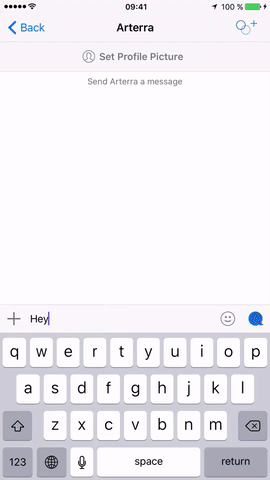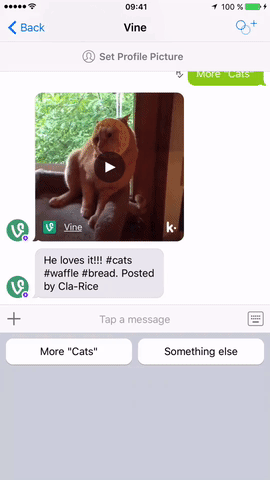Why Your Bot Won’t Get Attention And What To Do About It
Mikael Yang is the co-founder of Manybot.io — a platform for creating Telegram bots without coding. Manybot.io launched in July 2015 and has grown to power over 100 000 bots that send 20 million messages a day.
Two days ago Kik launched a bot platform. In their blog post they focused on the Bot Shop — a place where you can find all the bots available to play with. Right now it’s just 16 bots: not too much, but remember that Telegram Bot API started with only 8 bots and now there are hundreds of thousands of them.

The actual Bot Shop tab is buried in Magnifying Glass Icon -> Find People -> Bot Shop. Some people would think that it’s a bad UI decision, hiding the presumably next App Store so deep in the interface. For what it’s worth it should have been on the main screen, right? Is the Kik team high? How could Ted Livingston allow something like this to happen?
Actually, I think that the Kik team did everything right. Besides holding up access to the API for too long — which was their chance to win the developer crowd from Facebook — the decision not to make a big deal out of their Bot Shop in terms of UI was spot on.
Why? Because people won’t visit the Bot Shop that often.
Top Reasons to Visit The App Store
If you think about the times you visit an App Store you will find that there is a finite number of reasons for you to do that.
- You need to find and download a particular app. You know the name and just need to search for it.
- You need to find an app that does a certain thing. You don’t know the name but you want to search by keywords.
- You are bored/curious and want to explore what’s out there. You don’t know what you are looking for, but Featured and Top Charts are good places to start.
- You turned off the auto-update feature and now have to go in once every 2–3 weeks to get rid of that pesky red badge.
There are other reasons, but for the most part this covers it.

Going to the Bot Store
Let’s see how these reasons play out in a Bot Store.
- You want a particular bot. You know the name, type it into the user search bar. Done. No need to go to the Bot Store.
- You want to search for a bot by keywords. You go to the Bot Store, enter the keywords, research options, select bot. Done.
- You are bored/curious. You go to the Bot Store, explore Featured and Top Charts, select bot. Done.
- You turned off bot auto-update… Oh, wait, you can’t do that.
The 1st and the 4th reasons do not lead you to the Bot Store.
Let’s focus on the other two.
You want to search for a bot by keywords. This implies that you know what you want the bot to do. It’s like searching for a “to-do list” or a “photo editor” or a “calendar” app. You have to know what the app does beforehand.
This worked with mobile App Stores, because after decades of training on PCs, we already knew the different types of app categories and their capabilities. But when you go to a Bot Store — what are you going to search for?
The market will have to experiment and come up with categories of bots that are known and craved by the public and only then people will be able to search for bots using keywords.
There is a chance of this not happening at all. Look at WeChat — they’ve had an open API for 3 years and did so without a centralised Bot Store.
You are bored/curious and decide to explore what’s out there. This will happen to the most people the first time they hear about bots. You’ll want to see what bots can do. Perfect time to visit the Bot Store.
You go in. See all the bots. Try out a few of them. Some stay, some go. But what you will discover is that bots don’t do as much as apps do.

Due to the confined nature of their interface they can’t create unique visual and tactile UI/UX solutions or mesmerise you with stunning 3D graphics and epic soundtracks. Experts and visionaries will say that bots don’t need to do that and that their value comes from other things, and I agree with this.
But for the average consumer this takes away the reason to come back. Why do I need to check out the new bots if they are not fun?
Here is a more relatable example — how often do you come back to the Slack App Directory to check out what’s new? You went there once, saw the bots, installed some of them, but after that there is no reason to visit it again. Maybe in 3–4 months you’ll check it out, but compare this to the App Store that gets opened every week.
Bot Marketing
Bot Stores are a valuable part of the ecosystem that will allow developers to get first users onboard. But you should set your expectations right and not wait for hundreds of thousands of bot installs just because your bot got featured.
Developers will have to think hard about their distribution strategy and not rely solely on the Bot Stores. Referrals, invitations, content attribution, cross-promotion, etc. — bot creators will want to employ a variety of techniques to get their bot growing.
A whole new field of bot marketing is about to be created. Some of the techniques will come from the old playbooks, others will be new and unique to the bot ecosystem (think QR codes).

Word of mouth will remain as one of the top channels for getting new users. It’s going to be much simpler to refer a friend to a bot — just @mention the bot in the conversation or start a group chat with your friends and invite the bot to join in.
The other way is to forward a bot’s content to somebody. Telegram and Kik can sign the message with the bot’s name, so everyone who views the message knows where it came from.
Conclusion
Bot Stores will be great for getting your first users, though, don’t expect App Store numbers. This is due to the fact that there are not that many reasons to visit a Bot Store often.
That said, if you decide to build a bot for Kik, then the time to do that is right now. The Bot Shop is empty and any working product will get attention. This window will close in a month or two and after that you’ll encounter all of the struggles that have been pointed out.
See you on the top! ?












